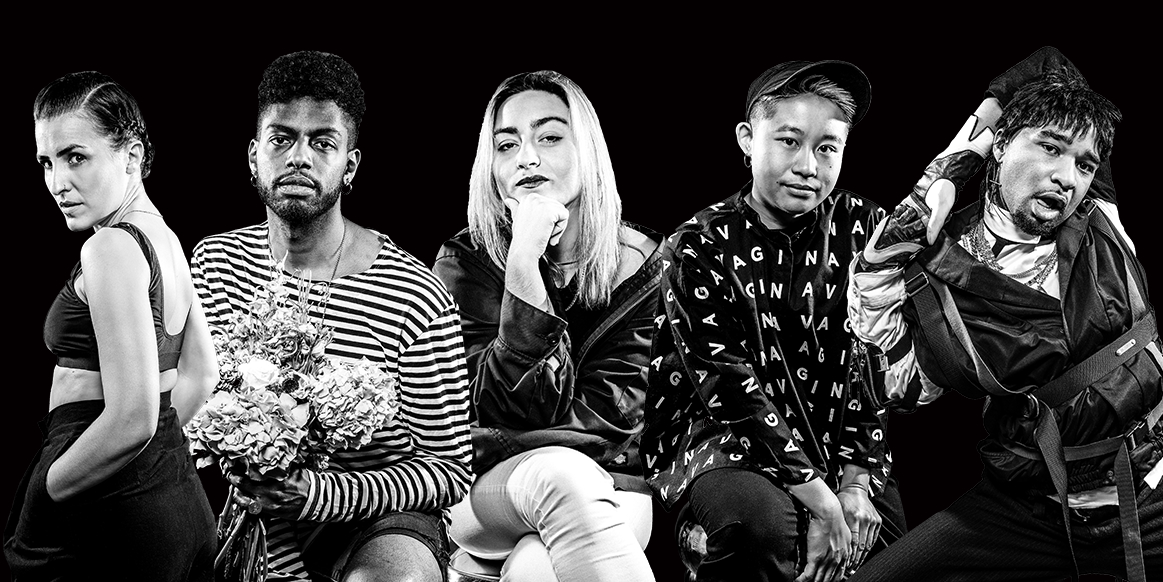Sophia Wallace, Devan Shimoyama, Casey Jane Ellison, Jes Fan, Jacolby Satterwhite (as shown above left to right) are artists who explore futurism, sexuality, identity, and biology in radical and uncompromising forms. They confront existing racist and chauvinistic structures, question art-world paradigms, and construct mythologies for the new millennium. In this interview exercise, each artist responds to four philosophical queries — providing a keyhole glance into the future of contemporary art.
Sophia Wallace / @sophiawallaceofficial
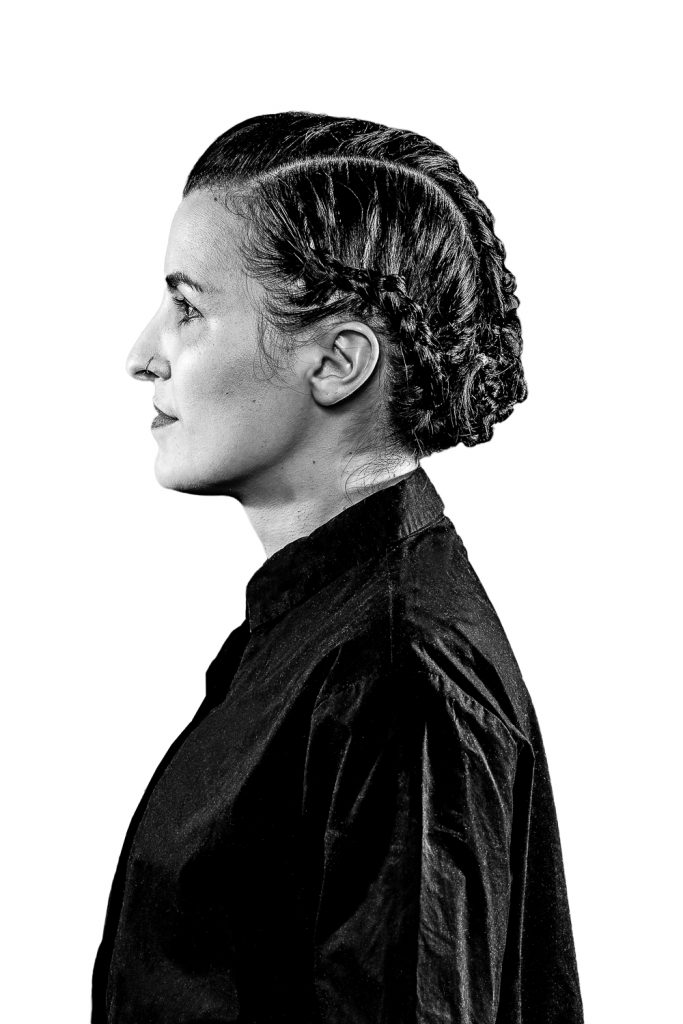
American conceptual artist Sophia Wallace has received acclaim for her project Cliteracy, which addresses the sovereignty of the clitoris as a pleasure-based organ and a tool of radicalization. She incorporates text, photo, sculpture, and installation in her work and has presented at galleries, museums and universities internationally including Catinca Tabacaru Gallery and the Leslie Lohman Museum in New York.
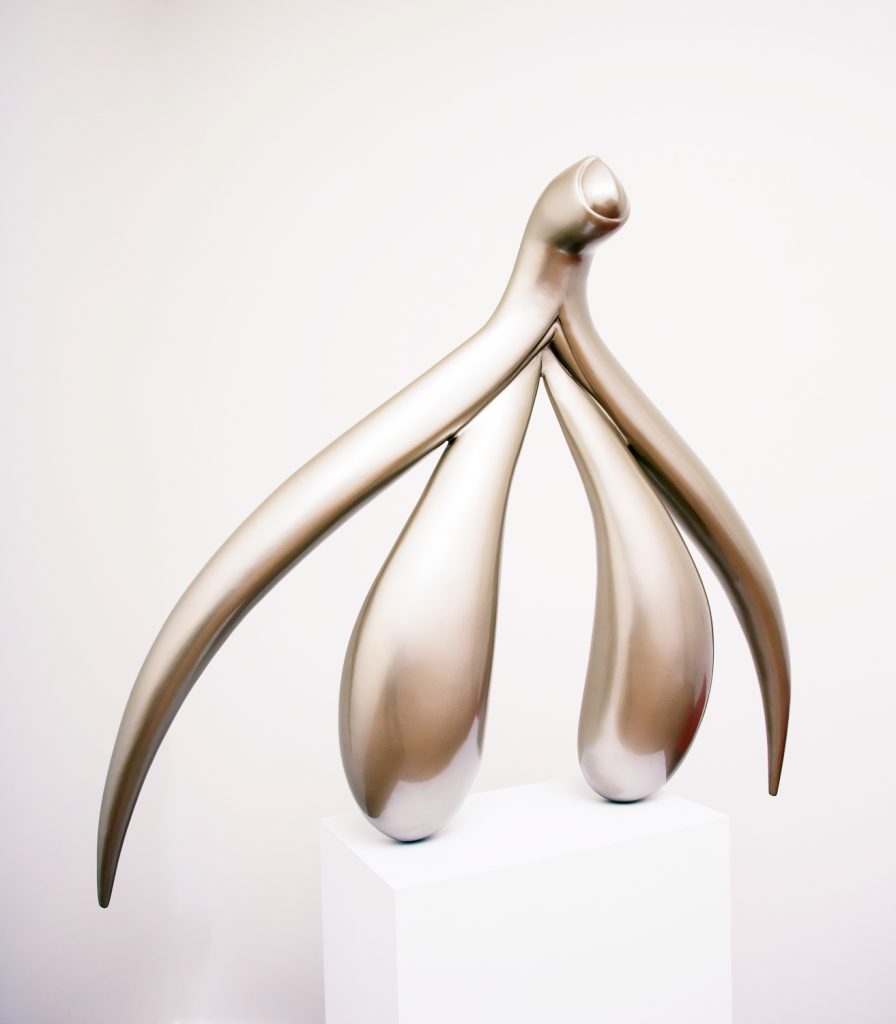 Άδάμας (UNCONQUERABLE), 2013 / fiberglass, wood, steel, enamel
Άδάμας (UNCONQUERABLE), 2013 / fiberglass, wood, steel, enamel
Body: How do you connect to the dichotomy between the physical/metaphysical?
From a very young age, I’ve felt in danger due to my sex and gender; being queer only amplified this. I’ve known and loved so many people who have experienced severe violence. I don’t know how to disengage my work from this corporeality of my body. Recently, I have been working with an ancient gnostic text, The Thunder, Perfect Mind, which contemplates a multi-gender divine while recognizing that its voice is considered illegitimate due to it’s female aspects.
Theory: Outline/provide the first few sentences of your manifesto.
The 100 Natural Laws of CLITERACY (2012) is the manifesto that has driven my practice for the last five years. I wrote these laws for the clitoris, which to this day is cut from the bodies of million of women and girls, and pedagogically excised through its omission in culture. The clitoris is the only organ whose sole function is pleasure. I argue that the clitoris is a queer symbol, standing for the right of all beings to joyful embodiment.
Identity: In what ways does your self inform your work?
I don’t think it’s possible to make work without the self, whether it’s a known factor or not. In a baseline sense, my queerness, feminism, and anti-racism are foundational parts of who I am. That said, I loathe how rare it is to have my work explored without being preceded by an identity qualifier. Despite the challenges of my identity, I also need to own the privilege I have. I live in New York City; I have an incredible education. I drove around with a broken headlight for months without getting pulled over because of my whiteness. I try to use the privileges I have to create work that is meaningful, and honest—a piece of a larger mosaic. [Text Wrapping Break]
Construct: Describe your utopia.
We wouldn’t need to say their names because they are alive, thriving, mattering. The profane would not be located in the genitals. Rather, it would be found in cruelty to living beings and the environment. In my utopia, no-one’s body would ever be used to justify violence against them. Queer bodies could travel anywhere safely; could sleep alone on the beach alone if the romantic notion took hold. History would include all of us, not only the conquerors.
Devan Shimoyama / @devanshimoyama
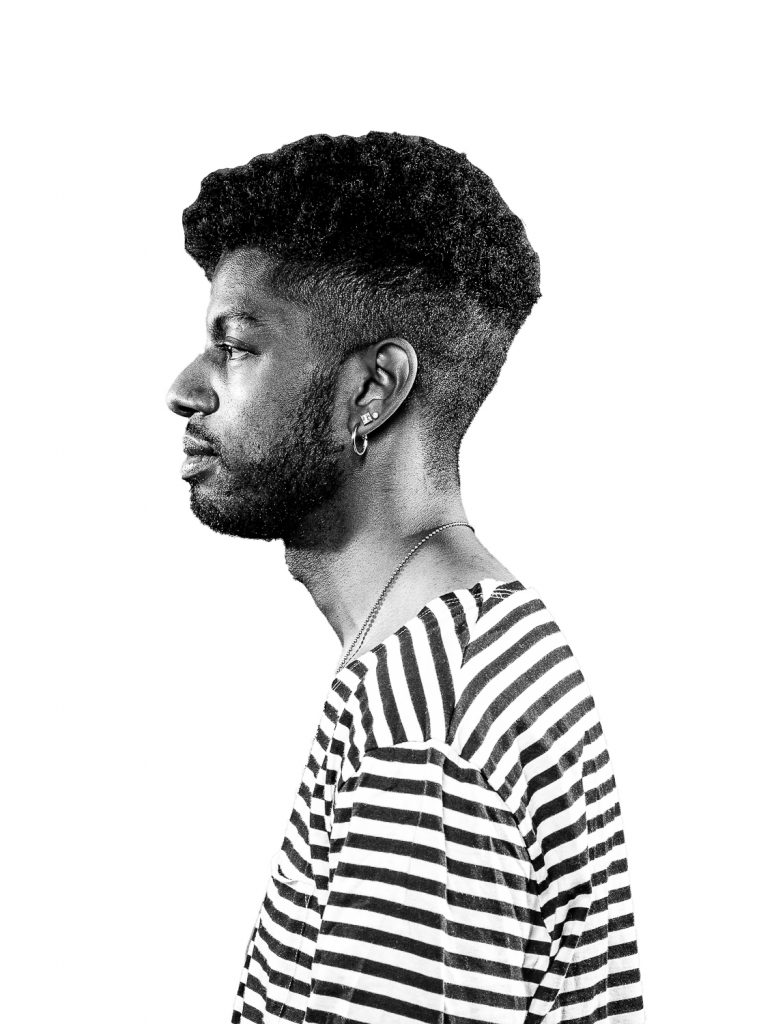
Pittsburgh-based artist Devan Shimoyama’s paintings depict contemporary mythology, centered around expressions and intersections of black, queer masculinity. Shimoyama is the winner of the 2015 PULSE Prize at Pulse Miami Beach. He has two upcoming solo exhibitions this fall, at DeBuck Gallery in New York, as well as at Samuel Freeman Gallery in Los Angeles.
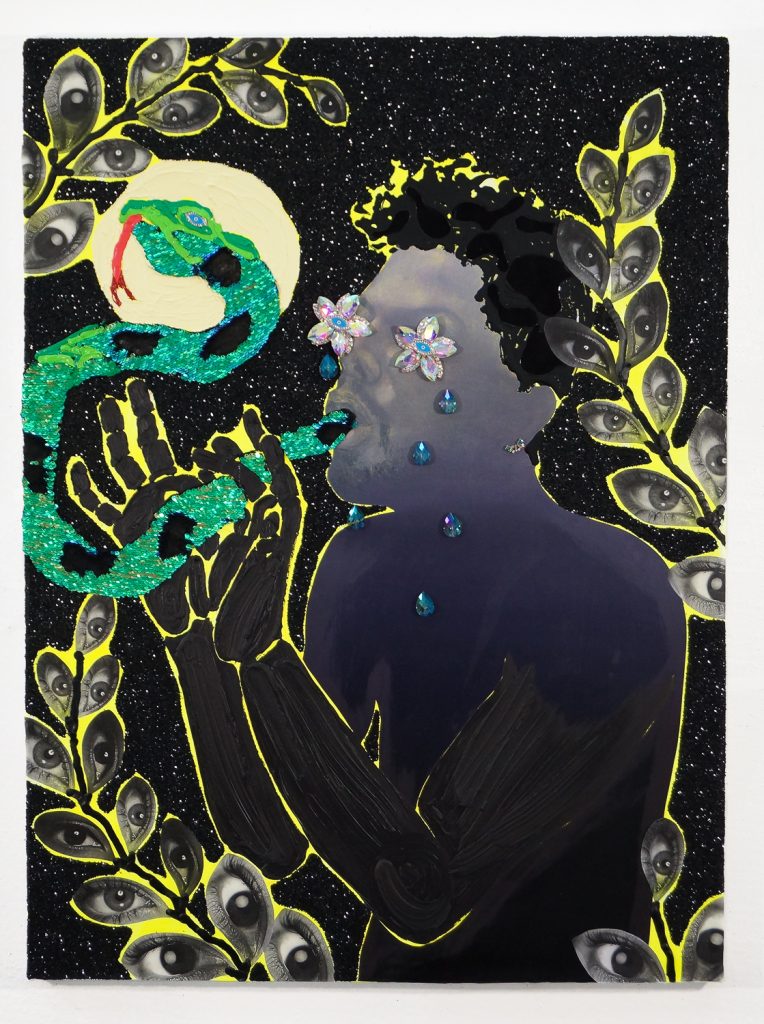
The Flutist, 2017 / oil, color pencil, sequins, collage, jewelry, and glitter on canvas
Body: How do you connect to the dichotomy between the physical/metaphysical?
I like to think of my work as a method to explore the boundaries between the physical and the metaphysical. I want my paintings to reimagine the queer black male body as a creature of both mystery and magic, in a developmental stage of locating his origins. My work represents a transcendental realm outside of reality; a vibrant and mystical existence for men that has long seemed outside of the realm of possibilities. I use the languages of classical mythology/fairy tales (the metaphysical) and contemporary stereotype (the physical) to illuminate a small fraction of what it means to be a young black gay man in search of his own identity.
Theory: Outline/provide the first few sentences of your manifesto.
My manifesto would have to cover a few major bases including finding ways to assert blackness and queerness into spaces in which exposure is necessary. Embracing my authentic self regardless of the situation or circumstances is something that requires a level of dauntlessness that I’m constantly working on improving; hereby my manifesto would include tools and strategies that enable people to be true to themselves.
Identity: In what ways does your self inform your work?
Much of my work depicts my own body, serving as a surrogate for my exploration of a queer black male mythology. I renounce the notion of one’s body belonging to oneself. It is a carapace that has been ascribed an identity and must navigate the world through that lens. In a way, I’ve depicted my own body (as well as the bodies of others) as a shamanistic character that travels from painting to painting revealing to the viewer a snippet of tiny moments of black boy magic.
Construct: Describe your utopia.
If this imagined society could have a constant flow of some sort of serotonin booster, everyone could just relax. I’m hesitant to suggest that any kind of utopic or egalitarian doctrine could actually govern successfully, as we’ve seen numerous iterations of this fail in literature. However, if we as a people could just be happy, relaxed and mind our own business, I think that could be an ideal situation. You can either love me or leave me alone.
Casey Jane Ellison / @caseyjellison
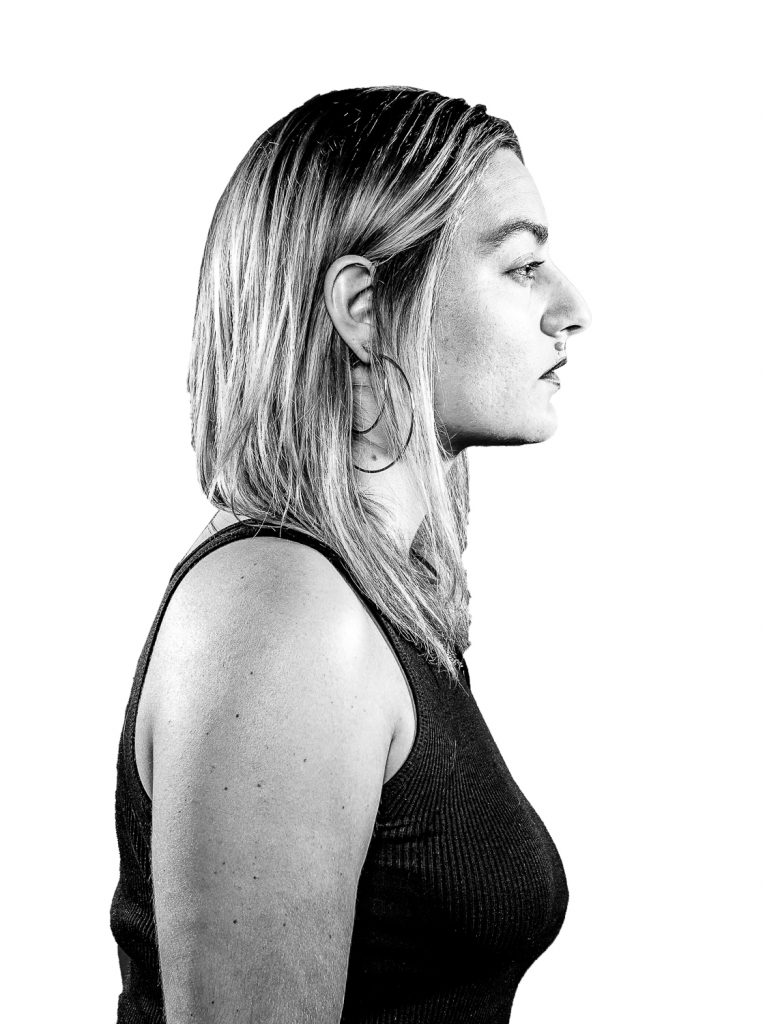
Multimedia artist, writer, and comedian Casey Jane Ellison is perhaps best recognized for her sharp deadpan, art world criticism, and visually engaging self-portrait work. She is the founder of Aboveground Animation, a roving exhibition platform, and hosts an interview series on Ovation entitled Touching the Art. Her work was included in the 2015 New Museum Triennial, Surround Audience, in addition to many other major exhibitions.
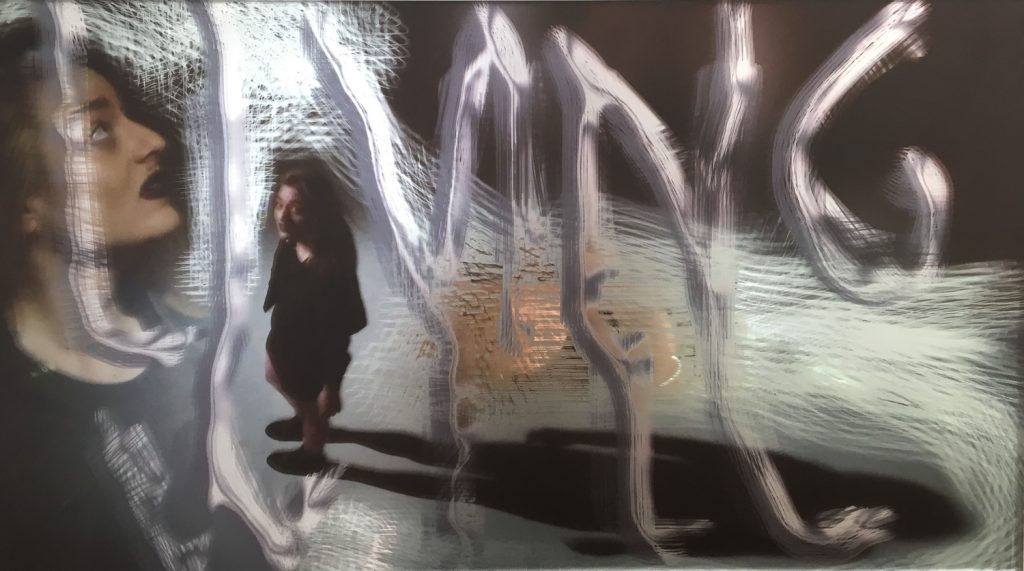 Working, 2017 / lenticular print on mirror
Working, 2017 / lenticular print on mirror
Body: How do you connect to the dichotomy between the physical/metaphysical?
What do you mean — like sex?
Theory: Outline/provide the first few sentences of your manifesto.
Not for free.
Identity: In what ways does your self inform your work?
Entirely.
Construct: Describe your utopia.
Fruits, chilies, fresh air, hanging out.
Jes Fan / @jeskfan
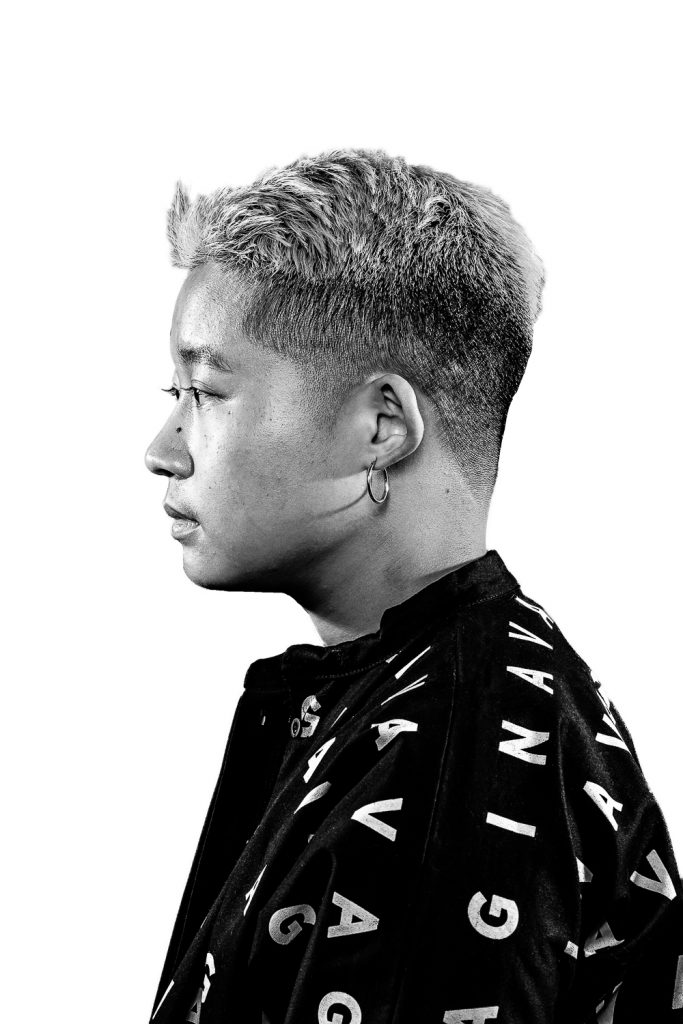
Brooklyn-based artist Jes Fan works with unconventional materials and processes, developing work that is equal parts conceptual and chemical. Fan investigates gender and biology — using products like silicone, soy, and glycerin, to dissect the relationship between the external and internal. Fan has shown in museums and galleries internationally, including a recent performance at Pioneer Works in Brooklyn.
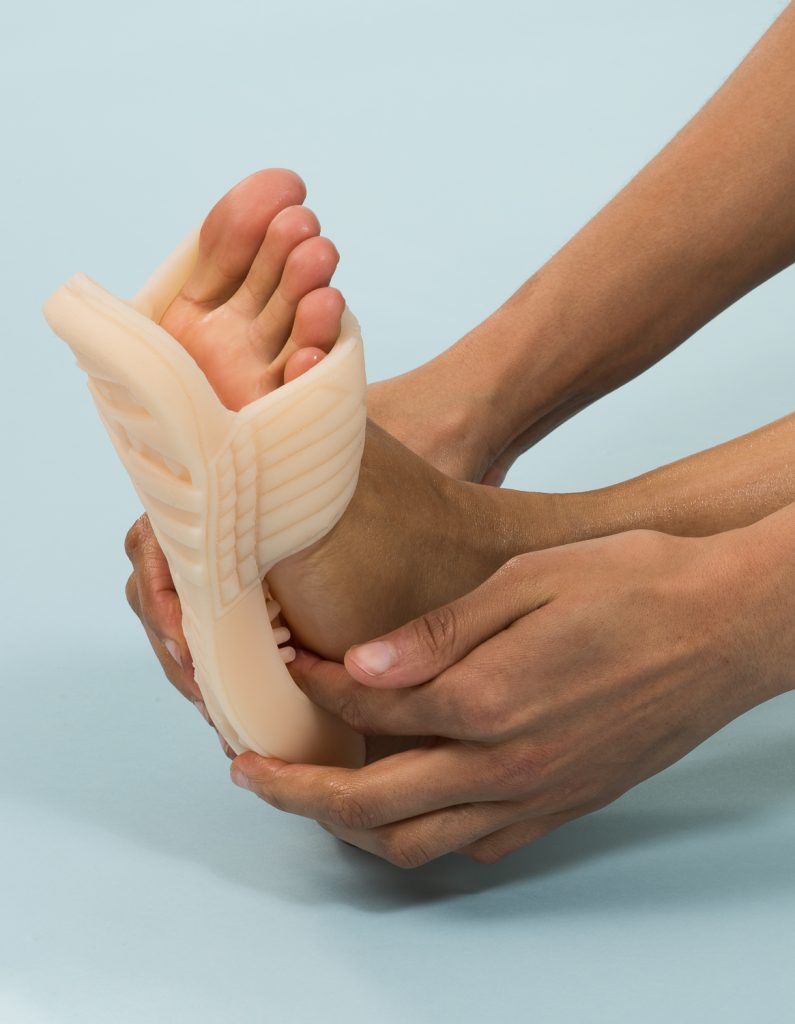
Soft Goods I, 2017 / digital inket photograph
Body: How do you connect to the dichotomy between the physical/metaphysical?
In my queer circle, we talk a lot about the problematic nature of visual signifiers — flagging one’s queerness/transness. Ultimately, there is a gap between one’s interior truth and external state of being. I’m not interested in that “gap.” I’m more curious to dissect the ways in which our biology is subject to mutated ecosystems and biocapital investments. Right now I am working with an endocrinologist to make my own brand of sex hormones. Tracing cholesterol from my father and my mother, I want to synthesize their pheromones and make them available as readymades—a radical way to form kinship. What if your body contains my father’s testosterone? Who are you to me then?
Theory: Outline/provide the first few sentences of your manifesto.
I don’t have a manifesto.
Identity: In what ways does your self inform your work?
My work is about identity, but not necessarily about me, or my identity. I suspect that every piece of art has to germinate from an artist’s subjectivity. Be it minimalism, or post-identity work; all work came from the distinct subject position of being an artist. No art can be entirely removed from the artist—I think people don’t think critically about how Donald Judd’s passion for white, machined 90-degree angles must be somehow influenced by his context as a white, cis male, and veteran engineer. I do find it problematic when a female, queer or artist of color’s work is automatically labeled as “identity art.”
Construct: Describe your utopia.
I wish everyone could compost more. Growing up in a family of manufacturers, I’ve seen the labor involved in making ordinary things — like a toy car or a doily. Humans are really useless beings that move energy from one state to another, from energy to matter, and (if we’re responsible enough) matter to energy. Utopia is too idealistic and impractical — I really just want to manifest something practical, and composting is a very easy way to slow down our possible doom in the near future.
Jacolby Satterwhite / @jacolbysatt
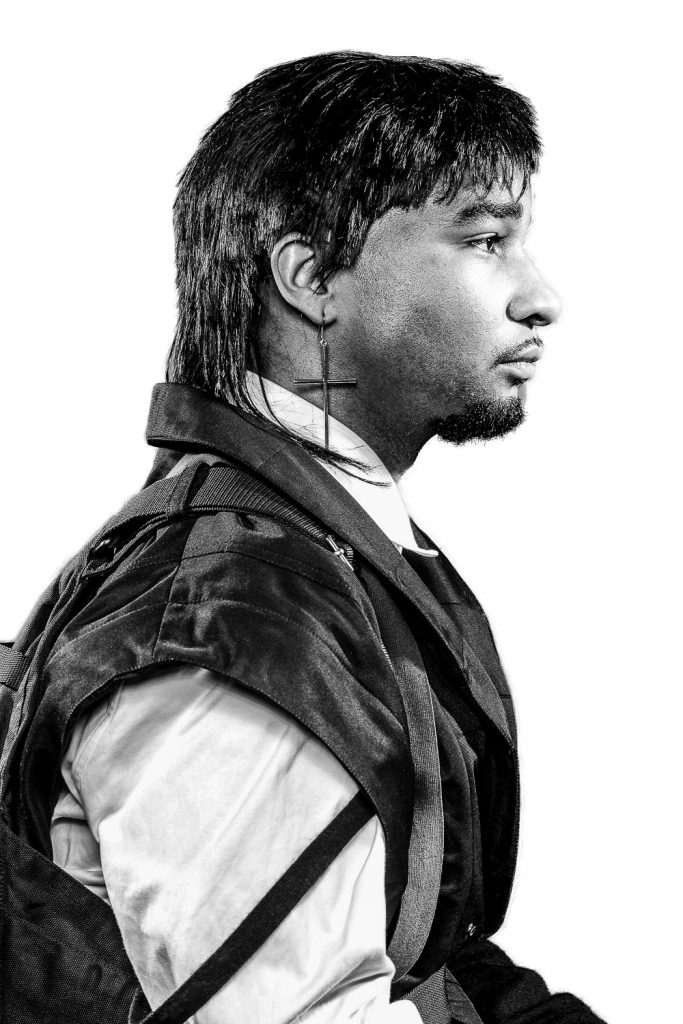
Jacolby Satterwhite uses video, performance, 3D animation, fibers, drawing and printmaking to explore manifestations of memory, desire and otherworldly virtual landscape. He has an upcoming solo show this winter at Asakusa in Tokyo, Japan, and will be included in a group show, The Extreme Present at Jeffrey Deitch’s new gallery in Los Angeles.
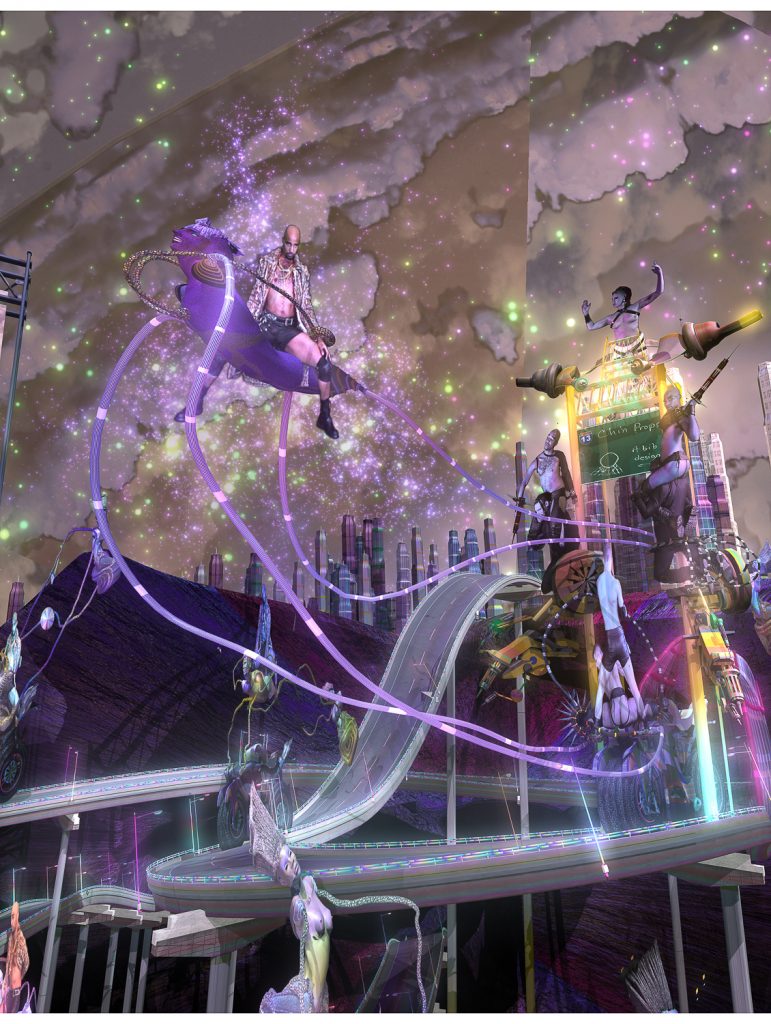 Interstate 13, 2016 / c-print
Interstate 13, 2016 / c-print
Body: How do you connect to the dichotomy between the physical/metaphysical?
The dichotomy between physical and metaphysical is generated when I find solutions to resurrect the tactile and probability aspects of art making, within the digital realm. Conceptually, I like to outsource archives and components from the real world, whether they are found drawings, models, performers, or sounds. My commitment to these components involves painstaking touch, and commitment to echoing the metaphors and myths they produce through my own subjective imaginative output. Synthesis is how I connect physical and metaphysical.
Theory: Outline/provide the first few sentences of your manifesto.
Uber yourself to hell. Disavow citizenship to any state, but learn its language, its customs. Riposte with Madonna: express yourself, then dropbox your language.
Identity: In what ways does your self inform your work?
In every way imaginable.
Construct: Describe your utopia.
Health, food, friends, self-sustainability, and consistently finishing art on time.
Featured photography by Maro Hagopian
Become a Posture Member
Join the Posture community and become an official member! By purchasing a membership, you will receive our special annual print edition ($20 value), free and/or discounted entry to all Posture events in NYC (including upcoming mixers, panel discussions, and networking opportunities), special offers from our partners, personal updates from the Posture team, and more. Learn more here.

